Tips for a successful (and enjoyable) DIY Surfboard making experience

If you’re thinking about making your own Bywater Surf wooden surfboard at home or have just purchased one of our kits, here’s our advice to set yourself up for success..
Make sure you have all the required materials, equipment and tools
The list of kit inclusions and required equipment can be found on our website and you’ll receive this info in your kit. Before jumping into your surfboard making, check over all of your board ‘ingredients’ and make sure you have access to the required tools and equipment. Some things can be substituted if need be (for example, in lieu of sandbags, a brick wrapped in a towel will suffice) There is nothing worse than realizing you don’t have something handy when you’re half way through a glue up.
Be smart with safety protection
Making your own surfboard from scratch will require use of various tools and machinery, not to mention use of glue and chemicals. Your hands, eyes, lungs and hearing are valuable assets and they should be protected at all costs. We strongly advise wearing safety glasses and dust mask when working with glue, especially when dry and hardened over fiberglass, it is very fine and sharp when sanding. Read safety sheets for all chemicals and adhesives and use machinery and tools in their intended way. Surfboard making is a memorable experience, but don’t make it for the wrong reasons!
Allow plenty of time for each step
We recommend a minimum of one week to build your board, to allow for sufficient drying time and to avoid a rushed experience. The process of making our wooden surfboards are designed to be done in stages, some stages may take longer than others, some you need to complete in one session and others you can leave for a period and come back to it. In particular when executing a glue up, like fiberglassing skins, gluing skins to the frame and then vacuuming bagging - make sure you have a good chunk of uninterrupted time to get through this stage correctly. You may have to tell your loved ones you've gone to the 'board room' for an important meeting..!
Be as precise and intentional as possible
Attention to detail will pay off. The cleaner your glue ups, the less clean up and sanding required. The neater your frame shaping, the better your skins will stick. The smoother your final sanding, the better the resin will shine. Your eyes will be in for a good work out when continually sighting down the rails to check for bumps and lumps. Make sure you utilise the marked centerlines, to ensure for an even, symmetrical board. When working with 2 part glues, it is essential that the mix up is exact, so the glue properly goes off and your board is strong!
Enjoy the process
Don’t forget to enjoy the process and have fun. If you have the means, set up a camera on time lapse when working on your board, it’s a great recap of your surfboard making journey. Take progress photos along the way to document the adventure.
Several hands make light work, join up with a mate or family member who also wants to make a board, share your tools & equipment and make use of having a second pair of eyes and hands!

Making your own board at home can be challenging, especially if it’s your first time, but we have designed the whole process to be as steamless as possible with instructions as detailed as possible. We are just an email away, if you have any burning questions or challenges along the way, please reach out. Many years of making surfboards means we have an answer to any and all questions. Our goal is for you to have a successful wooden surfboard to ride!
Doing anything new for the first time can be daunting but when it's a success it is oh so sweet, especially if you end up with your very own surfboard you've made entirely yourself. That's something to be proud of!




